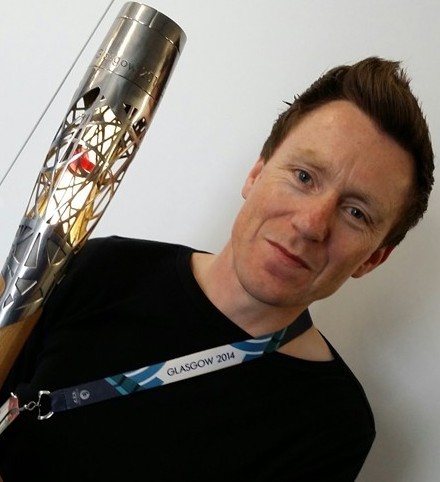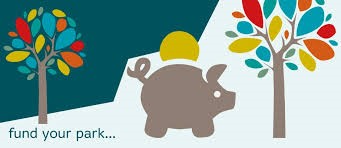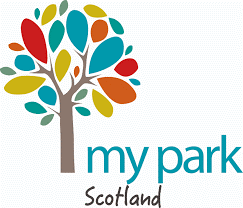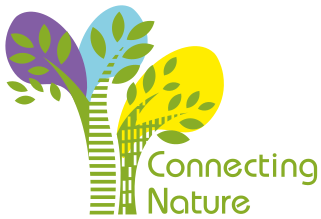Since the global financial crisis of 2008, crowdfunding has grown increasingly in popularity as an alternative way of raising financing. Crowdfunding enables a large number of people to contribute a relatively small amount of funding towards a project. This funding is usually committed through an online platform and the donations are then pooled together to fund a project. While equity-based and reward-based crowdfunding are now quite well established, the spotlight in this article is on civic crowdfunding where money is raised for public interest projects, in this case public parks or green spaces. We caught up with Ian Goodman, project manager of MyParkScotland to ask about the challenges and limitations of using crowdfunding for parks and green spaces.

Tell us a little about the background and set-up of MyParkScotland…
MyParkScotland was originally set up as part of the first “Rethinking Parks” programme supported by Nesta and national lottery funds in the UK. This programme initially funded 11 projects across the UK and looked at different business models and ways of working to help parks come up with new ways of bringing money into parks.
MyParkScotland works closely with Greenspace Scotland which supports the planning, development and sustainable management of greenspaces and green networks in towns and cities.
How much does a typical park crowdfunding project raise and what’s a typical donation?
There’s a wide variation but I would say the most successful level of crowdfunding is for projects raising between £1000-£2000. That’s an achievable amount for most groups who are reliant on volunteers. It’s also realistic in terms of doing enough promotion.

On the other hand we’ve seen much larger projects which have been successful but usually these type of projects have been in partnership with an organisation with paid staff who have the resources and time to commit to a high level of promotion.
In general we encourage groups to start relatively small and not rely only on crowdfunding. In MyParkScotand we are quite happy with crowdfunding to only form one part of the overall funding of a project. We don’t insist on 100% funding from crowdfunding.
Projects are able to raise funding through text donation as well as through the website. For example on the Monteach Mausoleum restoration project, the ability to donate by text message is very useful. When the group take people on a walking tour past the mausoleum, they can give out the number for text donation and visitors can donate straight away using their mobile phones. We have text numbers for all projects.
For SMS text donations the maximum donation amount is set at £10 but the average donation is about £4-5. The amount of online donation varies widely by project but I would say £10-15 is the most frequent donation amount used across all projects. We encourage larger donations to be made online as there is a transaction fee, we encourage smaller donations by SMS Text as the transaction fee is smaller.
What makes a crowdfunding project a success or failure?
It is mainly down to promotion. We had for example one group in Glasgow which managed to raise funding to paint railings which was a tough sell but they did their promotion well. On the other hand we have seen more attractive projects that haven’t done as well. There can be a belief among some groups that once you put the details online, people will miraculously find your project and donate. Or they think one tweet is enough…!
Planning is another important element. Groups can be reactive and don’t plan in advance. Also groups can get campaign fatigue where there’s a lot of enthusiasm for the first few weeks and then it dips. So we encourage groups to plan in advance so that when that fatigue hits, they have promotional activities already planned for the remainder of the crowdfunding period.
We have developed a Crowdfunding Resource Toolkit which is available for free through our website. It explains crowdfunding and includes a workbook to encourage planning and engagement. In some cases online promotion works, in other projects face to face works.
One of the things we found is that we need to get groups to really think about who might be interested in their project. We can’t handhold every project but one of the first things we try to do is give new projects a list of groups we think they can promote their project to. Sometimes groups can be very focused on the audience they already know. A good example is beekeepers – they mightn’t necessarily visit a particular park or care about that park but they do care about bees so if the project involved a beehive then they might contribute towards it on this basis alone. Another example is bandstands – there’s a big online community around bandstands. So again we encouraged groups fund raising not just to focus on people who use the park and as a result they had some success getting donations from this other wider bandstand community.
How do people hear about crowdfunding?
As well as the direct promotion of crowdfunding through our own website and URL, we get visitors who come from other park web pages or park visits. Some people come to our site looking for information about specific parks and green spaces, so in addition to general information about that park or green space if there is a crowdfunding project underway, it will also appear on that park page.
One of the insights we got from our original customer research was that people had difficulties in finding good quality information on parks or greenspaces. Traditionally you’d find information on parks on council websites but it’s not always the easiest to find. We have also found that sometimes only major parks are listed on the local authority website but not smaller or regional parks.
Greenspace Scotland is about parks and green spaces and access to them regardless of size. MyParkScotland started with local authority parks but over time we see this growing to include any kind of green space. Already we’ll list a crowdfunding project for any park or green space within the areas we work. We’ve had a few community growing projects attached to community centres rather than parks for example.
What are the main challenges you have faced in setting up MyParkScotland?
There is a charge to local authorities for signing up and being listed on MyParkScotland as there’s work involved in setting them up online. Local authority financing being as it is, this has been more challenging than we expected, so we’re not in as many local authority areas as we hoped we would be by now.
We’re also still finding it a challenge to get ‘Friends’ groups and other community groups to understand the concept of crowdfunding. We’ve come across a wide variance in skill sets and knowledge about. Some get it but it might not be right for all groups.
Other groups underestimate the importance of promotion in the success of crowdfunding.
You mention group involvement a lot, why is that so important?
Yes we believe crowdfunding is about the ‘long tail’. In other words it’s not just about raising the money alone but equally crowdfunding is about raising awareness about the green space itself, about the group, about what’s going on in the area and why that green space is important. It’s difficult to measure these kind of other benefits from crowdfunding but we’ve had feedback from groups that crowdfunding has led to recruitment of new members for example. It’s important that groups understand that crowdfunding is about creating a project that can enable the group to engage with a wider audience.
What is the overall level of funding raised to date through MyParkScotland?
So far approximately £50-60,000 has been raised through the MyParkScotland site but the value of the projects listed is closer to £500,000. We don’t see crowdfunding at the moment as a mechanism for funding big projects on a standalone basis but rather we see crowdfunding as part of the funding mix for groups.
What stage of development would you say MyParkScotland is at right now?
MyParkScotland was launched in May 2015 using Nesta funding during the pilot phase. I’d say we’re still in early development phase.
So after 3 years in operation, how sustainable is MyParkScotland?
MyParkScotland is currently not in a position to be self-sustaining through donations alone in reality, there are very few, even commercial, crowdfunding platforms are completely self-sustainable.

The value of donations would need to be a lot higher to be sustainable so it’s likely for the short-medium term that MyParkScotland will need support. We have received some grants both to support the crowdfunding side of MyParkScotland and also grants to support the website as an important information source about parks.
In the long term it might be possible to be self- sustainable but as the management fee we’re charging is very low, we’d need millions of pounds in revenue to become sustainable.
What are your plans for future development?
We have three priorities for future development:
- Firstly we need to look at grant funding opportunities to maintain MyParkScotland. We’re looking at various options including possibly business partnerships with the site.
- Next we also need to look at our model of expanding across Scotland because I think we increase our chances of success by being Scotland wide.
- Finally we need to look at technological development. Our website is mobile friendly but we don’t have a dedicated mobile app. When we launched we didn’t know how people would use the platform. So we’ll be looking at how people use the site and if a mobile app is the way to go, we’ll look at how we can get funding or partnerships to develop this app.
“One of the diversity of parks and green spaces is the people that use them but that’s also one of our biggest challenges. How do you reach everyone?”
More information:
Finance and business models for nature-based solutions:
Siobhan McQuaid, Innovation Manager, Centre for Social Innovation, Trinity College Dublin
Web: https://connectingnature.eu
Mail: Siobhan.mcquaid@tcd.ie
Crowdfunding parks:
Ian Goodman, MyParkScotland Project Manager, greenspace Scotland
Mail: info@mypark.scot
Useful reading:
Minton, A. (2017). Civic crowdfunding is privatisation masquerading as democracy. The Guardian.
Mollick, E. (2014). "The dynamics of crowdfunding: An exploratory study." Journal of Business Venturing 29: 1-16.
Rodrigo, D. (2015). "Three provocations for civic crowdfunding." Information, Communication & Society 18(3): 342-355.
MyParkScotland Crowdfund Resource Kit: download from https://www.mypark.scot/get-involved/crowdfunding-resource/
